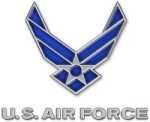The Goal Is To Develop A Deployable ILS For Use In Theater
 Officials from the 853rd Electronic Systems Group at Hanscom
AFB in Massachusetts are working to improve the transportability
and deployability of instrument landing systems with an upcoming
request for proposal for a deployable instrument landing system, or
D-ILS.
Officials from the 853rd Electronic Systems Group at Hanscom
AFB in Massachusetts are working to improve the transportability
and deployability of instrument landing systems with an upcoming
request for proposal for a deployable instrument landing system, or
D-ILS.
An instrument landing system is a precision-approach system that
consists of hardware, including antennas and electronics, and a
software application. "Having a mobile ILS system in the Air Force
inventory will provide warfighters in theater with three major
capabilities: the ability to convert a bare base into an operating
airfield, the ability to augment an existing airfield or the
ability to temporarily restore ILS capabilities at damaged
airfields during humanitarian operations," said Col. Jimmie
Schuman, the 853rd ELSG commander.
The D-ILS will provide a system of equal performance to existing
Category I fixed-based systems that provide aircraft guidance on
final approach in low visibility/low ceiling weather
conditions.
From a transportability perspective, a fixed-base ILS is very
large and takes multiple aircraft to deliver all the equipment. The
D-ILS will fit onto a single C-130 Hercules, which will provide the
Air Force with a great deal of flexibility. "The current
fixed-based ILS systems are time-tested solutions that everyone in
the aviation community has confidence in, since all major airports
have been using this technology for more than 50 years," said
Matthew MacGregor, the program manager for deployable air traffic
control and landing systems. "However, fixed-base ILS systems are
fairly large structures that require installation of concrete and
utilize large containers of electronics and cabling. We are working
to scale that system down and make it as lean as possible so a
small number of folks can install, configure and maintain the
system in a deployed environment."
Remote monitoring and maintenance is another capability the
D-ILS will offer. The maintenance concept for D-ILS is very lean,
as it allows for the majority of maintenance configuration
activities to be conducted from a remote location.

US Air Force Photo
The logistics concept for D-ILS consists of standing up a remote
maintenance center in theater that serves as a central depot
storage point for all maintenance items needed to sustain the
system at multiple airfields. A maintainer is expected to deploy
from the remote maintenance center when a system requires
maintenance versus having dedicated maintainers at each site.
This concept significantly reduces the maintenance footprint of
the system and avoids the need for a large number of system experts
in the field.
Members from the 853rd ELSG said they are confident they will
receive proposals that include these abilities. "We have done a lot
of market research and have seen the potential solutions industry
may propose," said Laura Horstmann, the D-ILS lead engineer. "We
feel that industry is prepared from a technology and technical
maturity perspective, since they are primarily utilizing commercial
technology and understand the integration risk associated with
tailoring this system to meet our users' needs."
The final RFP is anticipated to be out in May with source
selection in June, and an award by December. Initial operational
capability is scheduled to occur in early 2013.
 ANN's Daily Aero-Linx (05.02.24)
ANN's Daily Aero-Linx (05.02.24) ANN's Daily Aero-Term (05.02.24): Touchdown Zone Lighting
ANN's Daily Aero-Term (05.02.24): Touchdown Zone Lighting Aero-News: Quote of the Day (05.02.24)
Aero-News: Quote of the Day (05.02.24) ANN FAQ: Contributing To Aero-TV
ANN FAQ: Contributing To Aero-TV NTSB Final Report: Cirrus Design Corp SR20
NTSB Final Report: Cirrus Design Corp SR20




